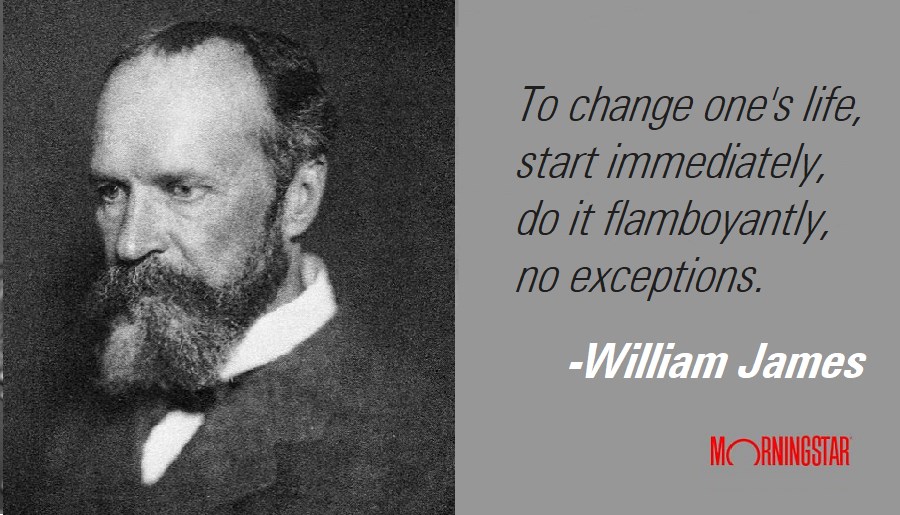
This article is a part of a month-long Morningstar Money Challenge. You can find the details here.
As we go along on our financial journey, one of the most important things we have to do is make and maintain a budget. Whenever you mention a budget, though, it usually evokes negative feelings. So for the next Money Challenge, we're going to understand why we like to spend, rather than save, and how to plan around these feelings so that our budgets better align with our priorities.
We'd all rather spend than save. As my colleague Sarah Newcomb points out, the satisfaction of instant gratification beats prudent long-term money management.“Things up close just feel more important than things far away. This is why it’s so hard to get motivated to do things we know are good for us in the long run, but don’t have an immediate benefit--or worse, they cost us in the here and now. It’s the same with saving and waiting years for long-term investments to bear their fruits. The more you discount the value of having that money in the future, the more you will prefer spending it today. That’s the effect of present bias: It magnifies things that are already close and shrinks things that are far off. We can’t really stop our brains from going down this path, but we can counter some of its effects,” she says.
The reason budgeting is hard is it requires us to give up short term gratification in aide of long term gains – in short, it requires trade-offs. For example, you can buy a used car today, and afford a vacation next year. Or you don’t buy a cottage in Muskoka this year, and instead, you can retire 5 years earlier.
Morningstar.com director of personal finance Christine Benz says everyone--regardless of age, life stage, or income--needs a budget. "The key point about a budget is that it helps ensure that your spending syncs up with your priorities," she notes.
Additional Reading:
- How to Create & Stick With a Budget
- Assess Cash Flow & Make a Budget
- Budget for a Life Together
To help you with the task, Morningstar has created a Budget Worksheet that you can use, and Benz has created a 5-step process to make it even easier. Here’s how she recommends you build a budget:
Step 1: Enter your current fixed and variable expenses, as well as information about your sources of income. For expenses and income sources that don't fit neatly into the categories provided, use the "other" lines. If you have several expenses of a given type, make a note alongside the line item--for example, "Moose Feed" or "Toiletries/Makeup." Also, record any savings that you're typically able to set aside each month.
Step 2: Start the budgeting process by scrutinizing your variable (or discretionary) expenses over the past month(s). Because you have the most control over this set of costs, making adjustments here is the fastest way to improve your household's financial picture. She recommends you be forward-looking as you evaluate your variable expenses. The data you've supplied about your income and spending provides a snapshot of the money you have coming in and going out. But your budget gives you a chance to shape your spending to fit with your goals, both personal and financial.
But remember as you go through the process of evaluating your variable expenses, Benz points out that it's also essential to be realistic. Just as dieters can't stick with the plan if it doesn't allow for the occasional piece of birthday cake or glass of wine, it's also unrealistic to plot out a budget with no room for the occasional movie or lunch with friends. Using your real past expenses as a template for your budget helps anchor you in reality, not a pipe dream.
Step 3: Next, turn your attention to your fixed expenses. Although household necessities are usually referred to as fixed costs, that's a bit of a misnomer. Yes, these items are necessities, but you may be able to adjust them somewhat. Among the areas where it's possible to reduce your fixed costs are:
Food
Clothing
Credit card interest rates (sometimes, but not always, negotiable)
Mortgage payments (if refinancing is an option)
Take note of the areas where you may be able to reduce your fixed costs and plan to follow up on them. If you can obtain reductions in these areas, adjust your budget accordingly.
Step 4: As you tweak your target expenditures, pay attention to how the changes affect your bottom line. Your goal should be not only to balance your household budget but also to increase the amount you have earmarked for saving and investing each month.
Step 5: Finally, put in place a plan to check your real-life spending versus your budget on an ongoing basis. One of the key mistakes that people make when budgeting is that they create a budget and then put it in the drawer.
Additional Reading:
- 100 Ways to Cut Down Expenses
- 3 Ways to Find Money in Your Budget to Invest
- The Next Test for Graduates: Budgeting




















